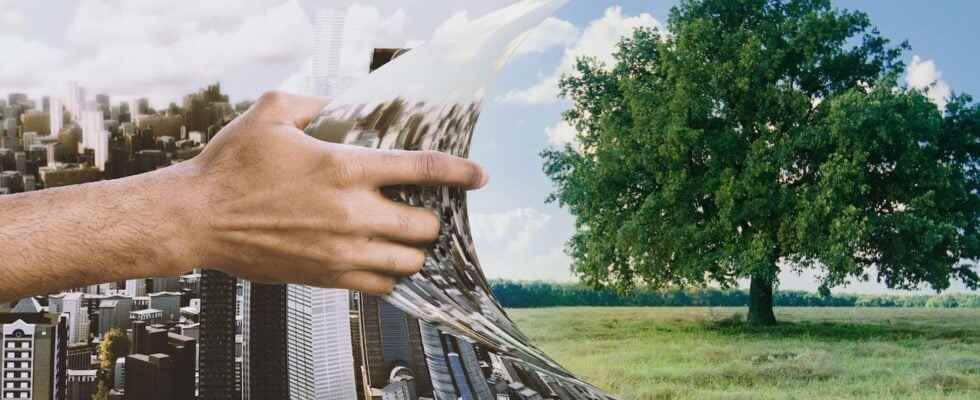In the current context of global warming, and more broadly, of an environmental crisis, trees have a role to play. And scientists can help us maximize the benefits we can derive from it. The example of a project carried out in Houston shows this.
You will also be interested
[EN VIDÉO] Extreme planet: the huarango, a thousand-year-old tree threatened with extinction This new extract from Peru, Planète Extrême, takes us to the discovery of a very particular tree: the huarango. Accustomed to the lack of water and the hot desert climate, it is now threatened. Discover, in this documentary produced by French Connection Films, one of the most astonishing trees in Peru.
To plant trees has been considered for some time as an effective means of limiting the effects of global warming. You still have to know where and what trees plant, scientists warn more recently. And Rice University researchers (United States) have asked themselves these questions. They concluded that for the city of Houston, for example, the holm oaks and the sycamore Americans can be considered the best of 17 super trees that can help make the environment more livable.
The researchers set out to identify the trees that would “work” best in the city, taking into account their ability to absorb carbon dioxide (CO2) and other pollutants, their tendency to drink water, their ability to stabilize the landscape during flooding, or to provide a canopy to mitigate the heat. They then identified the most suitable sites for a plantation.
To do this, they relied on data collected over the past decade. Data on health, pollution, etc. Then they used statistical analyzes to create maps showing where the mass would have the greatest impact. And to sort out the efficiency of trees in absorbing pollutants, mitigating flooding and cooling urban heat islands.
A transposable method
This is how they discarded most of the 54 species native. To select only 17. Among them, the holm oak, extremely efficient at absorbing all kinds of pollution. The American sycamore, on the other hand, excels at contain the floods and create gray areas.
Both, as well as red maple and bay leaf oak, prove to be interesting in matter elimination of pollution at theozone, to nitrogen oxides, to carbon monoxide, dioxide sulfur or even to fine particles. Compounds which can have serious effects on health. From asthma attacks severe, for example. Or even cardiac arrests.
Once these maps were established, the researchers joined forces with the city and several local partners to plant more than 15,000 super-trees at 14 sites. Particularly in areas of the city most affected by pollution or the most in need of flood control or carbon storage.
Based on this experience, researchers are now proposing a three-axis strategy that can be transposed to other cities. Objective: determine which trees are the right ones to plant, identify the places where planting will have the most impact on health and the environment and engage with the community to make the planting project a reality.
“Today it is essential to link the climate issues to public health issues. Our project proves that the commitment of people from various sectors can lead to innovative strategies in this area ”, concludes Loren Hopkins, an environmental analysis specialist, in a Rice University press release.
Trees in cities: a significant interest
A study by the nonprofit American Forests (Washington) shows that a lack of trees in an urban area can be very costly for the community.
France-science article published on 10/13/2003
Indeed, in addition to their significant role in controlling atmospheric pollution, trees effectively regulate runoff due to bad weather ; in their absence, the installation of drainage systems therefore becomes essential. Likewise, the shade they provide contributes to decrease the temperature and thus lower the amount of electricity consumed by theair conditioning.
And yet, data collected by the satellite Landsat from 1985 to 1995 on 448 agglomerations and more recently on 40 of these zones revealed a 10 to 17% reduction in the fleet arboreal urban over the past decade, 1.7 billion fewer trees. This deficit would also be closer to 21% according to American Forests which takes into account the fact that, throughout this period, cities continued to expand.
However, local initiatives aimed at taking into account the economic interest of trees in the city exist across the country. San Antonio (Texas) has just joined Charlotte (North Carolina) and San Diego (California) in the still restricted club of cities that have integrated trees into their urbanization plan, along with other infrastructures.
Interested in what you just read?
.
fs11
